I was looking for a benchtop multimeter and I decided to buy the
Aim-TTi 1908 5 1/2 digit bench multimeter
(datasheet) from
Saelig.
I like the 1908 for its big, easy-to-read display. There's a dedicated physical button for each measurement type, without the need to press/hold shift buttons, or fuss with menu system.
I think the most important part about a DMM is that it has to be clean and easy to use! Also: no fans! Completely silent.
Designed & Made in England!(these images are clickable for full resolution)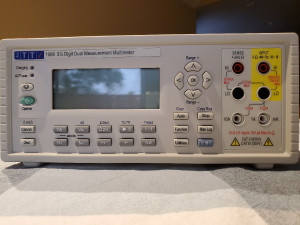
My current go-to multimeter is the
Fluke 87V, and while it's a great portable DMM, it has its downsides for me in a benchtop application.
Primarily, while taking measurements on the bench, it's difficult to make readings while its laying flat on the bench. Propping it up is also annoying at times because the unit is tall, and has a tendency to fall over. My biggest issue is the backlight-- it keeps turning off and its annoying to keep pressing it to keep it awake.
I considered several other DMM's in the 5 1/2 - 6 1/2 digit range. Unfortunately, all of them do have audible fan(s):
1.
Rigol DM3058E - 5 1/2 digit - (the display is too small, hard to read measurements)
2.
SIGLENT SDM3055 - 5 1/2 digit - (great display, but slow sampling rate according to reviews)
3.
Keysight 34461A - 6 1/2 digit - (probably the best pick, but overkill for my uses. My 2nd pick)
4.
Fluke 8845A - 6 1/2 digit - (probably a very accurate DMM, but that display is terrible)
There isn't too many reviews of the Aim-TTi 1908 on the internet (
save for a single lonely review on Amazon). So first, some exterior views:
(front)
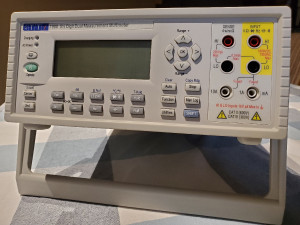
(front 3/4 view)

(top view)
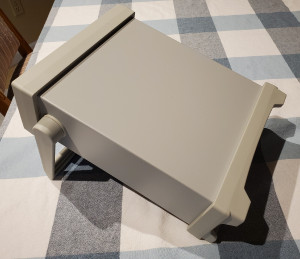
(rear view)
(Mine comes without the LAN/RS 232/GPIO interface. If you want those, you can get the slightly upgraded version, 1908P for a bit more.)
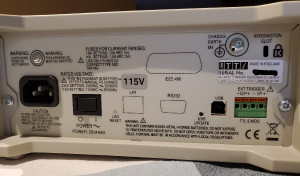
(bottom view, fuse compartment)
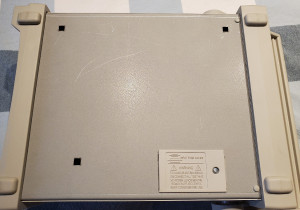
(easily accessible fuse holders)
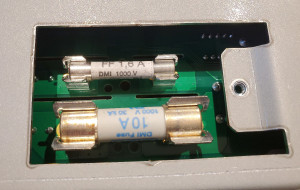
(display and buttons)
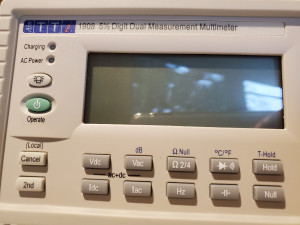
(input terminals)

I'll start with the coolest/unique feature of Aim-TTi 1908:
(what's with this "charging" light...?)
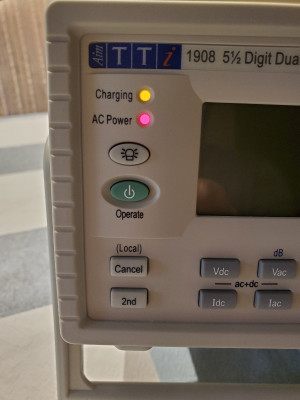
(that's right, it has a built-in Ni-MH battery for mains-free portable usage!)

Probably the biggest downside about the 1908 is that, while it's a supposed 5 1/2 digit meter, it's only 120,000 counts! That means that 5 digits of precision at 11.9999V becomes 4 digits of precision at 12.000V.
For example, the ranges are as follows:
1V range
min- 0.12000
max- 1.19999
10V (e.g. measuring 1.5V batt)
min- 01.2000
max- 11.9999
100V range (e.g. measuring 12V batt)
min- 012.000
max- 119.999
1000V (e.g. measuring 120V AC mains)
min- 0120.00
max- 1119.99
So I personally don't know how to classiy this DMM. Precision-wise, I guess it's somewhere between a 4 1/2 digit and 5 1/2 digit DMM? In my opinion, it's misleading from Aim-TTi to market this as a "5 1/2 digit" DMM.
For example, it's closest rival, SIGLENT SDM3055 is also a 5 1/2 digit DMM, but it has 240,000 counts, so it's a "true" 5 1/2 digit DMM. As I understand, a DMM needs to have at least 200,000 counts to be considered "5 1/2 digit". (0 or 1, followed by 5 digits of precision at all times)
Here are some measurements I took in comparison with my Fluke 87V. I'm no Dave Jones with high precision calibrated equipment, but I try my best! By the way, the Fluke 87V is a 6000 count DMM. However, in high-resolution mode it can do up to 60,000 counts, I think. Thus, I gues the Aim-TTI is only 2x better at 120k counts?
120V mains measurement:
(Fluke in normal mode)
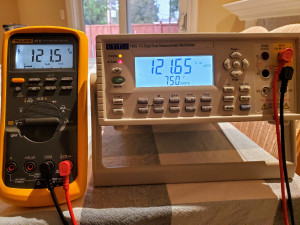
(Fluke in high-res mode)

1.19999V to 1.2000V range crossover point:
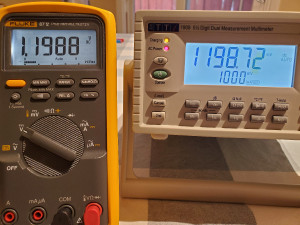
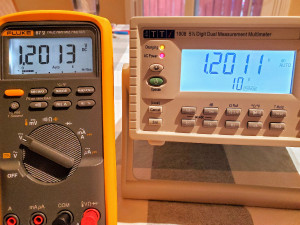
11.9999V to 12.000V range crossover point:


And lastly, I will mention it has several "dual measurement" modes. Here it is measuring DC voltage, and the AC component of DC voltage:
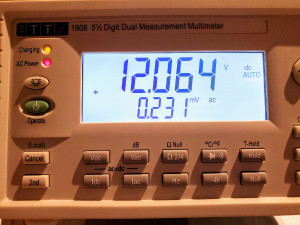
I just got the unit so I'll need to read the manual and play around with it a bit more. There's a ton more technical info in the datasheet for those interested.
Overall, I think it's a good unit for my hobbyist needs, and for anyone who can live with it's precision limitations. It's an an easy-to-use benchtop DMM, completely silent, and portable. It does have a very simple display, but that's also the beauty of it-- no fuss. I'd take function over form any day.
If anyone wants me to testing anything specific, please let me know.